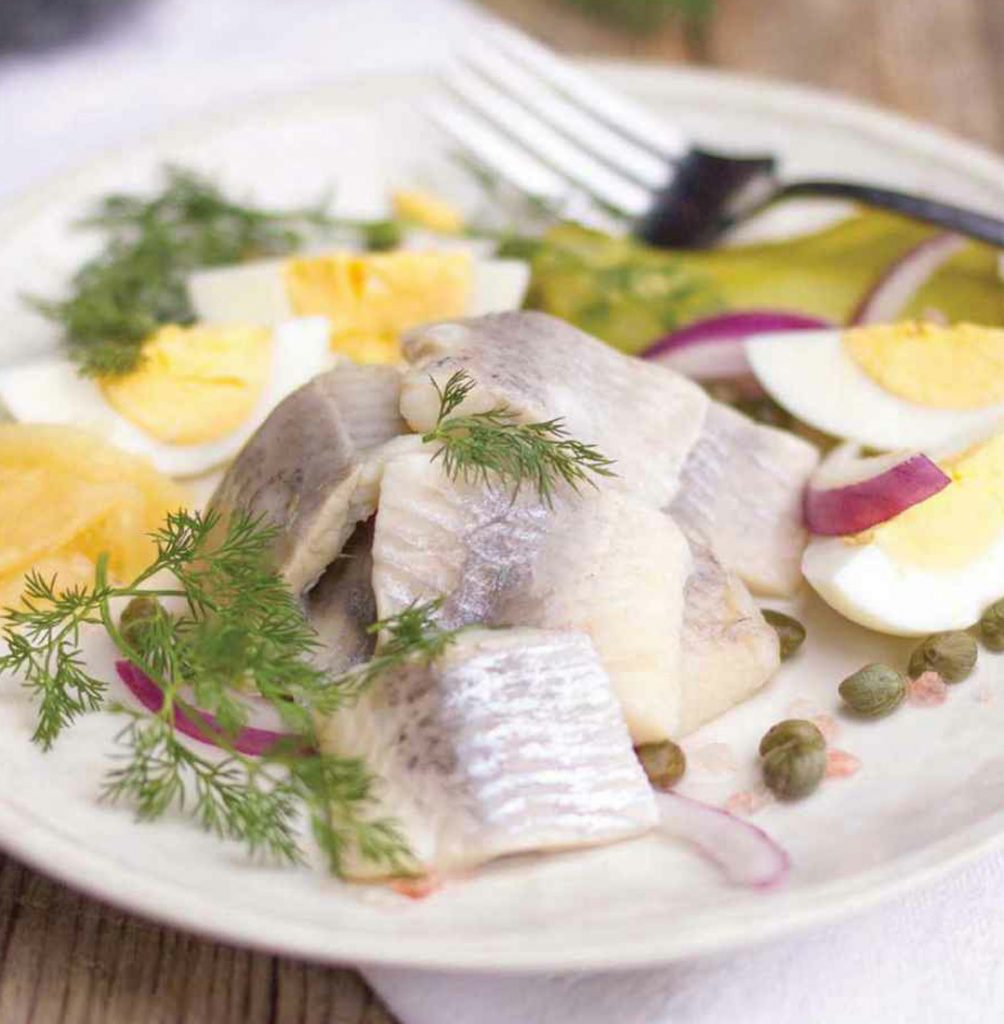 It wouldn’t be the holidays without my dad’s pickled fish. He often goes ice fishing and pickles Northern Pike because it is hard to fillet all the bones out of that type of fish. When pickled, the bones get soft and disintegrate, so you can enjoy Northern Pike without crunching on the bones and still get a ton of healthy calcium from the bones.
It wouldn’t be the holidays without my dad’s pickled fish. He often goes ice fishing and pickles Northern Pike because it is hard to fillet all the bones out of that type of fish. When pickled, the bones get soft and disintegrate, so you can enjoy Northern Pike without crunching on the bones and still get a ton of healthy calcium from the bones.
Ingredients
- 4 pounds herring or skinned Northern Pike fillets, cut into 2-inch pieces
Saltwater brine
- 10 cups water
- ½ cup fine sea salt
Pickling brine
- ½ cup thinly sliced red onions
- Handful of fresh dill
- 2 cups water
- 2½ cups coconut vinegar
- ½ cup Swerve confectioners’-style sweetener or equivalent amount of liquid or powdered sweetener
- 2 teaspoons ground allspice
- 1 teaspoon dry mustard or mustard seeds
- ½ teaspoon grated fresh ginger
- ½ teaspoon prepared horseradish
- ½ teaspoon peppercorns
How to Make It
- Place the fish in a large bowl with the 10 cups of water. Add the salt and stir. Cover and refrigerate for 24 hours, then drain the fish and rinse it well.
- Place the drained and rinsed fish in a clean 2-liter glass jar, layering it with the sliced onions and dill.
- In a large pot over medium heat, heat the 2 cups of water, coconut vinegar, sweetener, allspice, mustard, ginger, horseradish, and peppercorns. Once the sweetener has dissolved, about 5 minutes, allow the brine to cool a little, then pour over the fish packed in the jar. Cover and refrigerate overnight to allow the flavors to meld; the longer the better for stronger flavors. If you let it sit for 5 days, the bones will dissolve. The pickled fish will keep in an airtight container in the fridge for up to 1 month.
- To serve, arrange the pickled fish on a platter with hard-boiled eggs, pickled ginger, capers, fermented pickles, sliced red onions, and fresh dill.
| Nutrition Facts |
Serving Size 1 |
Nutritional Value Per Serving |
| Calories 240 kcal Calories from Fat: 126 kcal |
|
% Daily Value*
|
| Total Fat 14 g 40% |
Trans Fat 0.0 g |
carbohydrates 2 g 2% |
Dietary Fiber 0.3 g 1% |
Protein 27 g 54% |
* Above mentioned %DVs (Percent Daily Values) are based on 2,000 calorie food intake.
DVs (Daily values) may be vary depending upon individuals daily calorie needs. Above nutritional values are estimates and should only be used as a guide for approximation. They are not allfoodchef.com recommendations. Calculations are based on average weight of 194 lbs. and ages of 19 to 50 years. |
